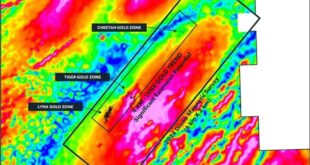IDAHO FALLS, Idaho (KIFI)-Two separate instances in the region have led law enforcement agencies to use thermal imaging drones to advance their investigations.
One of them was in Sublette County, Wyoming.
A woman with special needs left her home and walked away, covering a distance of three miles.
Law Enforcement was able to rapidly find her due to the use of a thermal imaging drone. With the use of the drone, first responders relied on more than her tracks in the snow to find her.
“The thermal technology stands out and shows heat signatures of people. And if you saw the video, there was even a deer in that video. Things of all kinds of heat signatures help get responders on location. And just from the air, you can see so much more area and cover an area faster. And so we were able to direct the responders right to where they were just following footprints in the snow,” Sergeant Travis Bingham from the Sublette County Sheriff’s Office said.
The use of a drone also proved useful in a recent incident involving a police standoff in Idaho Falls, but law enforcement uses the devices for a variety of reasons.
“We’ve flown search and rescue missions before and river searches. We’ve done traffic investigations by mapping traffic scenes as well as crime scenes. And we suggest our canines and our SWAT teams with, again, overwatch to help keep officers safe,” Sergeant Garren Kelly from the Idaho Falls Police Department and a drone pilot said.
“It’s up to the first responders and the call that they get if are deputies or search and rescue or fire, see a need like, hey, the drone can help in this situation or we think that somebody can be missing long term and we need to find them quicker. We even can fly indoors tactically, if somebody has barricaded a suspect or something like that, we leave it up to the responders and coordination with training our team on what we can do,” Sergeant Bingham said.
Sergeant Kelly also gives the public advice if law enforcement is flying a drone.
“If they’re flying, please don’t just walk up on us. It’s important we focus on what we’re doing at the time. They’ll be more involved, ask answer questions after we’re done flying. But generally, you know, we’re not out to get anybody. Any time we fly is just generally tied to an emergency or an investigation, like a crime scene or something like that,” Sergeant Kelly said.
Sergeant Bingham says the drone proves useful in remote counties.
“We’re limited on resources, and we cover a huge area. We’ve had natural disasters like forest fires where we could have done damage assessments with that. We do, like I said, do crash reconstruction, help the local troopers, do a crash reconstruction on the highways. There’s just a lot of uses with our search and rescue, things like that,” Sergeant Bingham.
Sergeant Kelly and Sergeant Bingham also say law enforcement have to follow the F-A-A regulations regarding drones, but they also have many department regulations they have to follow as well. They also need to obtain a special certification as well.
Page load link
 Unmanned Aerial Vehicle The latest drone news
Unmanned Aerial Vehicle The latest drone news


